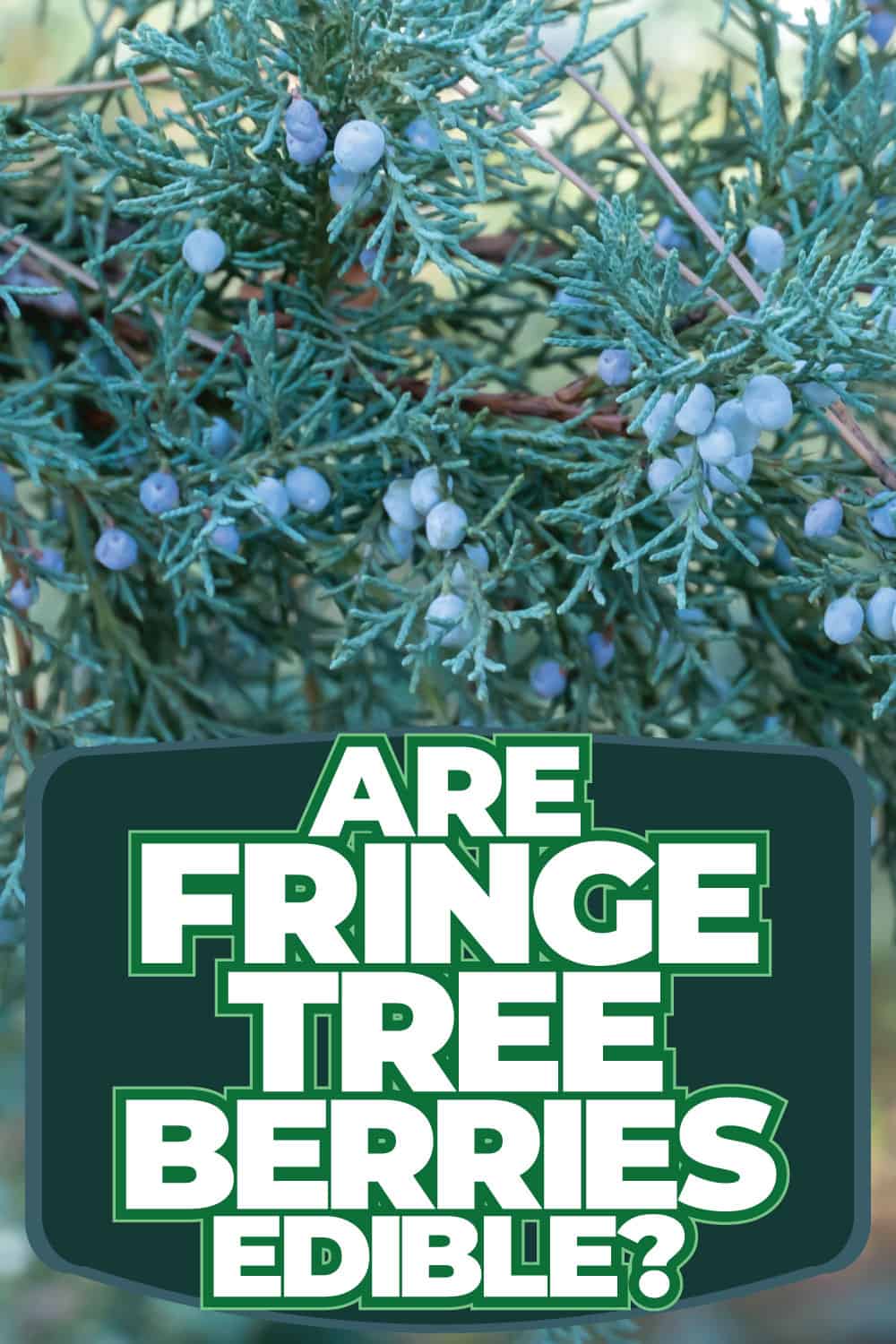Finding new ways to enjoy the plants in your garden can be very exciting. Do you have a fringe tree in your landscape and wonder if you can eat the berries it produces? Are fringe tree berries safe for humans to eat, or is this species considered poisonous? Well, we've done some digging and have these answers for you!
In general, the berries from a fringe tree aren't edible for humans. Fringe tree berries can be attractive to birds around your garden, but when it comes to you eating them, we don't recommend it.
However, according to the FDA and the ASPCA, consuming fringe berries doesn't prove as poisonous for people or pets. So that's good news in case someone ingests one.
As we start this post, we will cover fringe trees and discuss whether eating their berries is safe. We will also cover additional questions about this species and give tips for your garden. With that said, let's dive right into this topic below!
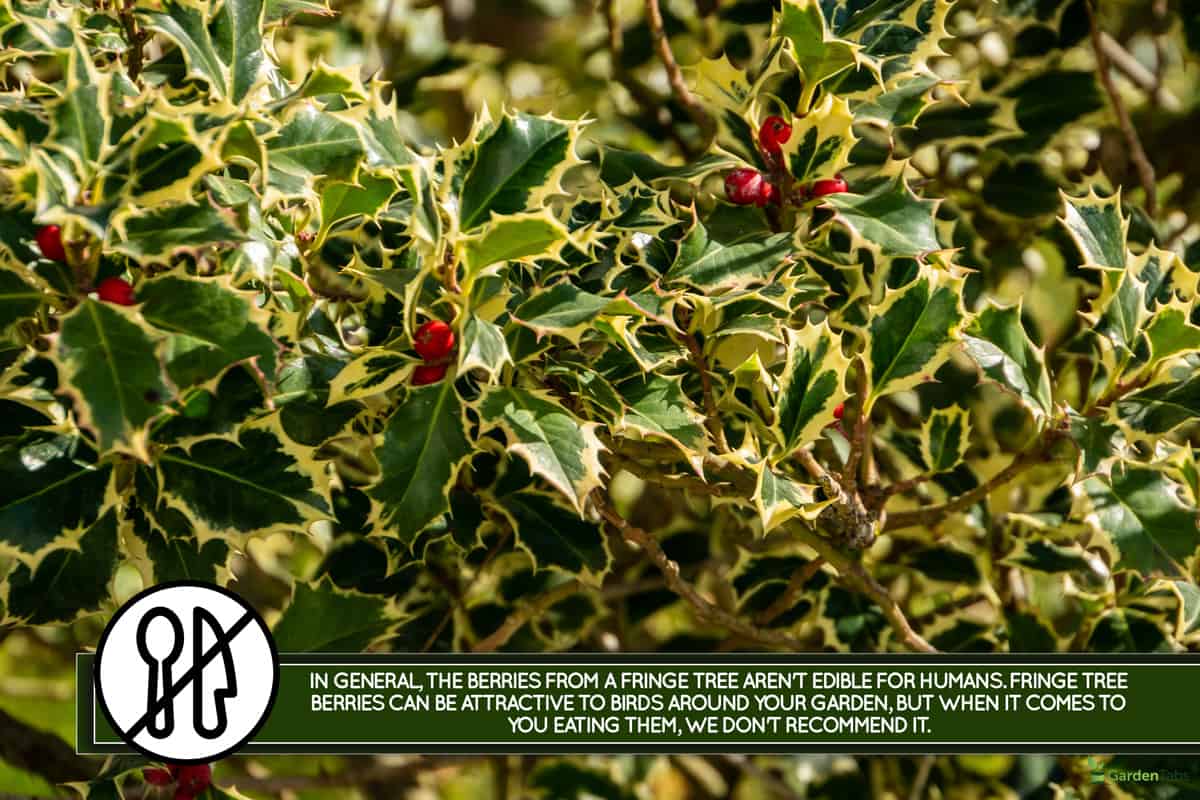
Can You Eat The Berries From A Fringe Tree?
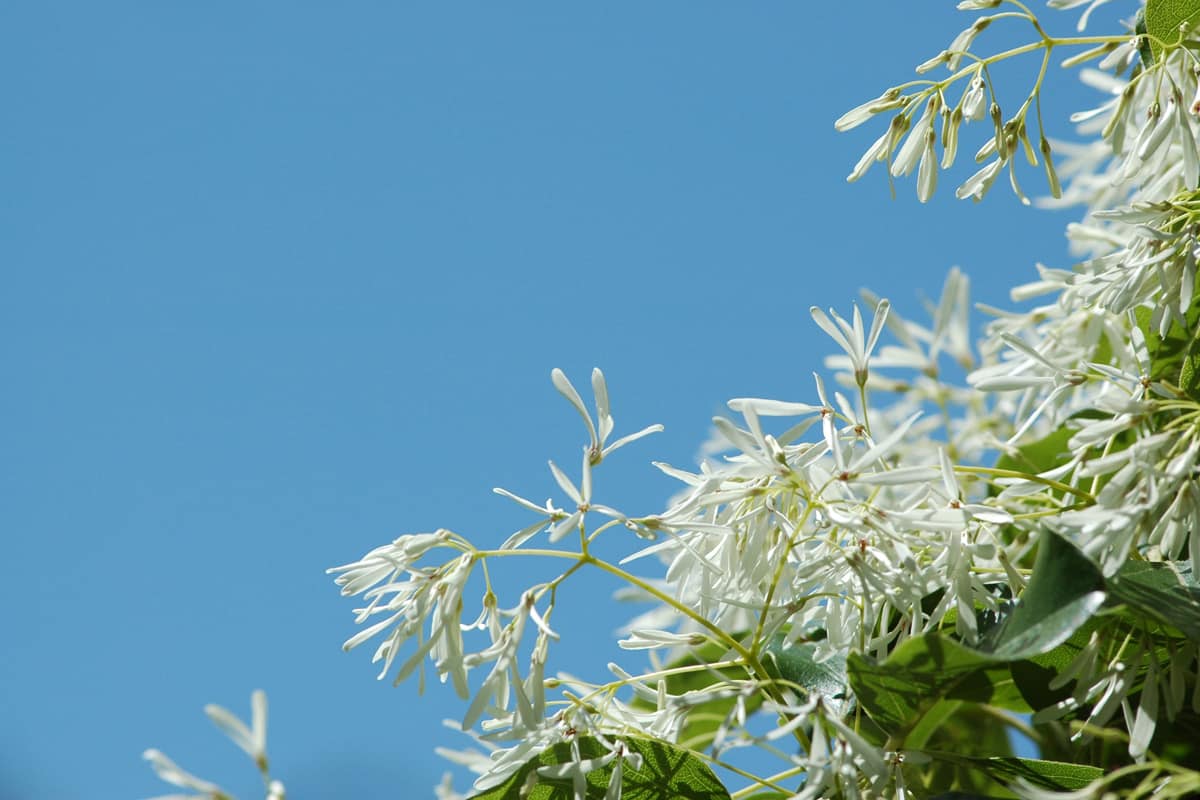
Although the berries from a fringe tree aren't poisonous, that doesn't mean they are edible for humans. This species will generally produce tiny berries during the late summer and early fall, which might look good enough to eat.
However, these berries do not taste good and aren't considered something people or pets should be consuming. One crucial factor to remember with fringe trees is that female plants produce clusters of 1/2-inch to 2/3-inch-long blue-black berries, which can attract birds.
On the other hand, people want to steer clear of eating this fruit. According to many experts, these fruits can be tricky because they look edible and have an almost olive-like shape.
Again, these aren't going to necessarily make you sick, but they aren't going to give you a warm fuzzy feeling inside, either.
Are Fringe Tree Berries Or Flowers Poisonous?
No. Neither the flowers nor berries from a fringe tree will be poisonous to people or animals. According to the FDA and ASPCA, fringe trees are not toxic to us or pets, so they're safe to have in your garden.
Furthermore, this tree belongs to the Hamamelidaceae or witch hazel family, and neither is classified as poisonous or toxic.
However, if you eat hazel leaves, flowers, and stems, you could experience nausea, vomiting, and constipation, so we don't recommend doing this.
Remember, just because a plant looks pretty and has berries: doesn't mean you can consume them. Since witch hazel is often used for skincare and other beauty products, that's a much better way to utilize your fringe tree.
What Does Fringe Tree Fruit Taste Like?
You can generally expect the fruit from a fringe tree to be sweet but slightly astringent. If you've ever smelled witch hazel, this might be a good way to describe the way your tree's berries would taste.
Think of your fringe tree's fruit as a first sweet, then bitter flavor. Besides that, eating this fruit can cause stomach problems for people and animals, so it's not usually worth the risk.
On top of that, fringe tree fruit is relatively tiny. So, if you eat a couple of berries, you shouldn't become sick, but if you consume many: that could be an issue.
An interesting fact about this tree species is that its dried root and bark are used to make medicine.
So, if anything, your tree is best for beauty and medicinal purposes over anything else. You might also want to remember this once the berries start falling from your tree.
So, if you see a large amount on the ground, we recommend raking them and discarding them.
When Do Fringe Trees Produce Fruit?
You can typically expect a female fringe tree to bear fruit between August and September. As we said, female cultivars are the only fringe trees that can produce berries.
So, if your tree doesn't make any fruit, it is male. Instead, your fringe tree will have showy flowers, which are still not meant for eating.
According to experts, the fruit from a female fringe tree is called a 'drupe' and should contain a single, large seed in the center. So, it's very similar to a seeded olive in size and shape.
Furthermore, as birds eat the fruit from your fringe tree, they will scatter the seeds throughout your garden. That can be helpful for growing new fringe trees, although the conditions have to be ideal.
Do All Fringe Trees Produce Berries?
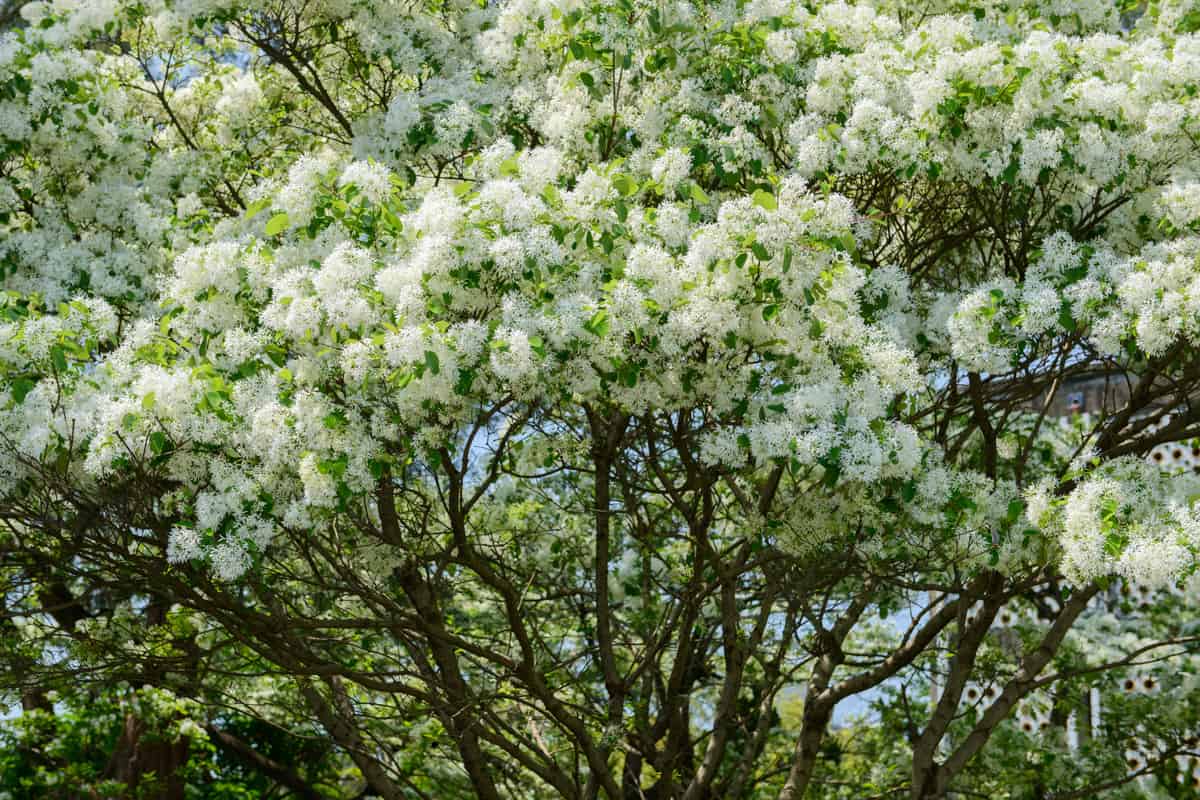
No. Not every fringe tree is capable of producing fruit. As we covered earlier, male fringe cultivars cannot make berries but boast large, showy flowers during their blooming season.
In contrast, female fringe trees will produce fruit, which is how you can easily tell what sex your tree falls into. The male and female fringe trees are entirely different plants.
The female tree makes berries that birds can eat throughout the fall, while the male trees attract pollinators with their gorgeous blooms.
So, each tree has a unique purpose; one will have fruit, while the other will have stunning flowers.
What Do The Flowers Look Like On A Fringe Tree?
If you have a male fringe tree, you want to get ready for gorgeous blooms in the summer/fall. Generally, your male tree will produce pure white, wispy, and cloud-like flowers.
On top of that, a female fringe tree also produces flowers, but they are less impressive. As we stated, your female fringe tree is better for attracting animals/birds, while the male trees are better at attracting pollinators.
Regardless, your fringe tree should boast white blooms throughout the flowering season. Some professionals describe the flowers on a fringe tree as four long, narrow petals.
The flowers also have a droopy look to them, which makes your tree even more interesting to look at. Again, the male plants will have larger flowers, but they will be the same as the female cultivars'.
Your fringe flowers may take a long time to bloom, but it's worth the wait once they do.
How Long Does A Fringe Tree Bloom?
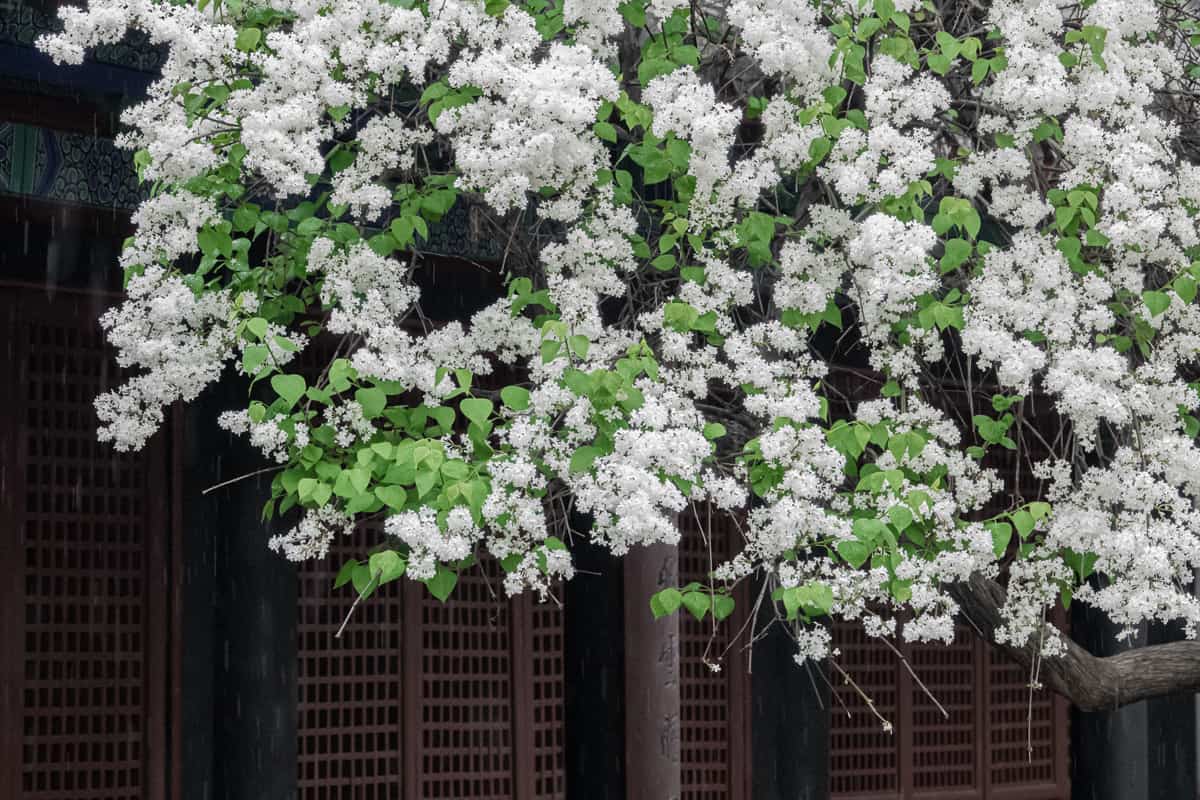
A fringe tree normally produces fruit and flowers for 2-3 weeks. This usually happens through the later spring and summer, although you might see your fringe tree have flowers/berries into the fall.
Every climate is unique, which can affect the blooming period of your plant.
Many experts refer to the fringe tree's blooms as a signal of an ending spring and a new beginning summer season. So, you can expect them to first open around May to June.
Your tree's flowers will also bloom in white, showy clusters, so they're sure to become the staple of your landscaping for those two to three weeks.
For female trees, your blooming period will be followed by berries in the early fall. Depending on your flowering timeline, this could mean you have fruit by August, although it's safe to assume September.
How Often Do Fringe Trees Bloom?
A fringe tree will bloom once per year. Although your plant features gorgeous white flowers, these are only going to form and blossom during the springtime each year.
Again, female fringe trees will have berries in the fall but lose their white flowers beforehand.
Like many flowering tree species, the fringe tree doesn't produce blooms throughout the four seasons. Even if you're somewhere with warm winters, it's not common to see a second blooming period.
So, try and enjoy your tree's breathtaking flowering throughout the 2-3 weeks they stick around.
How Big Does A Fringe Tree Get?
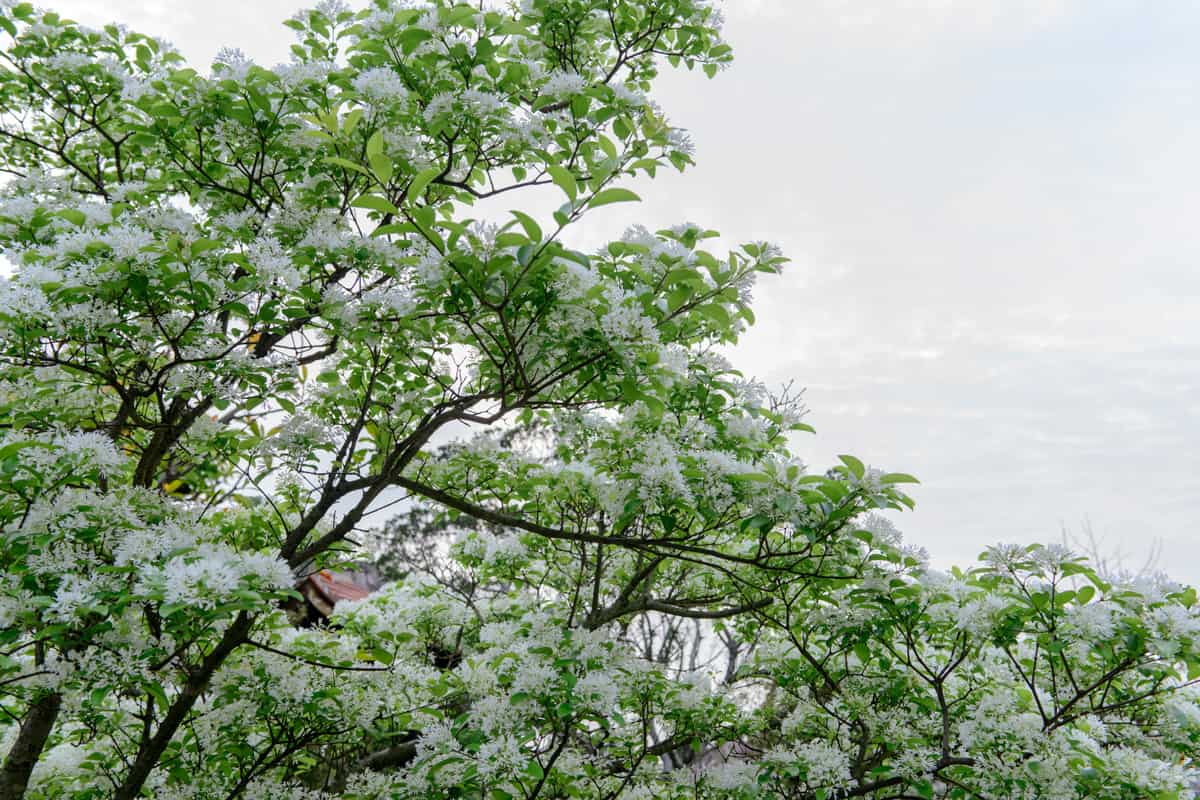
Although your fringe tree may become a bit larger, this species stays relatively small. On average, a fringe tree will reach 12 to 20 feet in height and 12 to 20 feet in width upon full maturity.
However, a fringe tree can become a bit larger in the wild, which is something interesting to note.
One of the main reasons a fringe tree remains smaller is because of its growth pattern. This species usually has multiple stems, contributing to its shorter mature height.
In addition, you can usually train a fringe tree to grow with a single trunk, but this might not help with its final mature sizing.
The best thing to do here is to give your tree plenty of space to grow and let mother nature work her magic.
How Fast Do Fringe Trees Typically Grow?
One of the main drawbacks of planting a younger fringe tree is the slow growth rate. Typically, this species will average 6-10 inches annually, which is not much in the bigger picture.
With that said, your tree may grow closer to 12 inches annually if the conditions are good, which is possible for some plants. Regardless, you won't see more than a foot of yearly growth on a fringe tree.
A great way to promote faster fringe tree growth is by giving your plant moist soil and plenty of fertilizer. So, this is doable if you want more rapid growth for a fringe tree.
To Finish It Up
Whether you have one or multiple fringe trees growing in your yard, you've probably wondered whether it was safe to eat their fruit. From what we found, you don't want to do this.
Even though the berries from a fringe tree aren't technically poisonous, they can cause stomach trouble if you eat enough of them. Additionally, they aren't very tasty in general, so we recommend leaving them for the neighborhood birds.
On top of that, fringe trees don't all produce fruit: only female plants.
Made it to the end? Check out these helpful related plant posts below!
When To Cut Back Mums After Blooming [And How To Do That]
Can You Eat Onions Right Out Of The Garden After Picking? [Inc. White And Red]
When To Transplant Blueberries [And How To]
